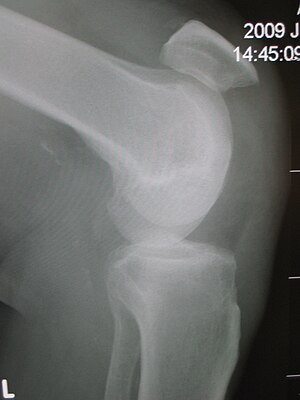
Patellar Tendinopathy
Patellar tendinopathy (PT) is classically seen in jumping athletes. However, it is also a relatively common injury in runners due to the repetitive nature of the discipline. Recurrent overload within the tendon results in micro-trauma and continued activity leads to degeneration and failed healing. This may start as an inflammatory process and progress to chronic degeneration. PT often results in prolonged absences from sporting activity due to the functional importance of the patellar tendon.
Anterior knee pain is commonly felt at the lower border of the patellar, although pathology can occur anywhere along the tendon. Pain is worse during and after activity and after prolonged periods of sitting or knee flexion. On examination, the tendon may feel slightly thickened with tenderness commonly located in the proximal patellar tendon. Tenderness is classically exacerbated when performing a decline squat, where the individual is asked to carry out a single-legged squat on a slight down slope.
PT is usually diagnosed clinically. However, lateral x-ray may demonstrate calcification within the tendon. Ultrasound is the imaging modality of choice, enabling dynamic assessment of the tendon, and may demonstrate thickened irregular areas of degeneration.
Initial management aims to halt the progress of an acute ‘inflammatory’ tendinopathy so reduced activity should be advocated. Ice and NSAIDs may be useful in the early inflammatory stage but their benefit beyond this time has not been demonstrated. Correction of any biomechanical abnormalities such as pes cavus (high arch) or pes planus (flat foot), as well as improving flexibility of the claves, hamstrings and quadriceps through stretching will reduce the risk of relapse.
The role of corticosteroid tendon injections remains debatable. However, newer therapies such as sclerotherapy injections aim to obliterate ‘new vessel’ formation within the tendon, thus relieving pain.
Eccentric tendon exercises have become the mainstay of tendinopathy treatment. For PT, this involves performing squats on a decline slope, on a daily basis for at least three months. The exercises may be painful and this should not prevent completion. However, pain on the following day is a sign of excessive rehabilitation and the individual should reduce the activity.
Surgery for PT may involve excision of degenerative tendon tissue with few advantages over conservative management. Surgical success rates are reasonable (approximately 80%), although return to activity may take 6 to 12 months.

